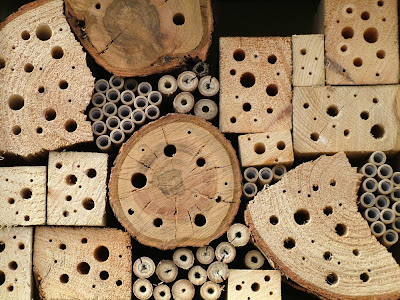Before I began the courtyard renovations, I bought a little fountain. The rumbling air conditioner, the weakly flowering gardenias, and root bound plants still in their black containers looked even more pathetic once I got my husband to drag it in. So I got motivated and tidied up my neglected courtyard. After trying my best to artfully arrange the best of the remaining potted plants around the fountain, I sat and enjoyed the gurgling.
 |
| Gurgle. Gurgle. |
In the meantime, I had spied some American goldfinches hanging around my birch tree just on the other side of the fence. I would see a flash of olive green and pale yellow out of the corner of my eye or I would hear them peeling the bark off of the birch just for fun. And then they were in my fountain!
 |
| Why, hello there! |
Check that out. Habitat! I thought I would need some interesting plants for them, but the birch provides the perches and hidy places they like. I have since put out a little feeder for them. Just thistle seed as I don’t want those bully sparrows coming in and hogging all the food.
I swore I wasn’t going to put out another birdfeeder. They are such a mess. But the goldfinches are cute, so I put up with their sloppy ways.
I swore I wasn’t going to put out another birdfeeder. They are such a mess. But the goldfinches are cute, so I put up with their sloppy ways.
 |
| Yes. I'm very cute. And I'm going to poop everywhere. But you won't care. Because I'm cute. |















